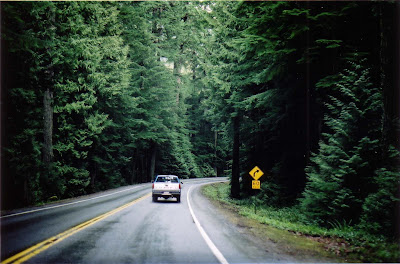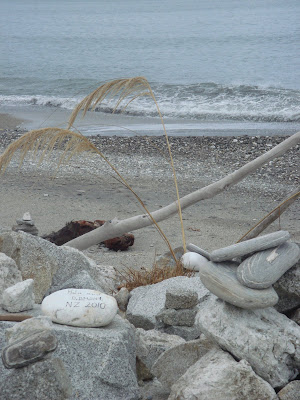These six pictures are of a series of sculptures in Milan, more of the entertaining public art that
seemed to pop up thought the city (when I was visiting, at least). Without knowing what the actual project is about or what's it's called, I've been calling it "Cows of Milan". For this blog post I sought to find out, at last, what these cows were all about--and whether they had any relationship to Toronto's
Moose in the City.

Cow #1: "
Zebra". Artist: Selection SRL. Undetermined location, but almost certainly in or just outside the
Galleria Vittoria Emanuele which leads from the Piazza Duomo to the Piazza della Scala and contains some of the most high-end boutiques in the city. The day I took these photos would have been the first time I went walking around the city on my own--I started at Piazza Duomo, a pretty obvious choice, and was drawn into the Galleria since it is the most impressive-looking thing in the square (aside from the Duomo itself).

Cow #2: "
Muuusica" Outside La Scala (
Piazza della Scala). Artist:
Terrakuarello. I was surprised and very pleased to discover this second cow, outside the famous
La Scala opera house--fittingly decorated with little people singing. At this point I realised there was a theme going, and I started looking for more cows along the way.

Cow #3 "
Hot Milk". Artist: Marijana Savic. I'm not sure the exact location, but it was somewhere around
Piazza Cordusio--I was walking toward the Castello Sforzesco and I went along Via Dante, shooting a photo on that corner right before I took this one.
What my online research tells me is that these cows were part of something called
CowParade. It was, and is, a kind of
art-show-plus-philanthropy event, and it has "travelled" through over 70 cities worldwide. New cows are create by a new set of artists in each city; the cows would stay in place for several months before being auctioned off for charity. It's a pretty novel and amusing idea, probably owing its success to the creativity and humour generated by the chosen motif and also to the public element of the project, which takes away the exclusionary aspect of "philanthropy"--in a sense sharing the good cause with everyone (even those who cannot afford to donate or purchase).

Cow #4 "
Mucca Urbana", Via Dante. Artist: Birgitta Latis.
Via Dante is a relatively long, straight stretch of street (for downtown Milan), accommodating pedestrians and bikes, though I wasn't clear about the rules for cars. I think this is why there were several cows placed along it (#3, 4 and 5 on this list)--a spacious thoroughfare lined with interesting shops, offices, cafés and restaurants.

Cow #5: A roll in the hay... or rather, "
Felicity", Via Dante. Artist:
Rafaella Cosco. I love this one in particular because a happy cow is a cute cow, obviously. She looks like she's wiggling her legs about and smiling with glee.
Toronto's Moose project is, as it turns out, a spin-off of the Cow idea. Since Toronto wasn't one of the cities included in the CowParade project (Sydney, Australia and Auckland, NZ did participate), I suppose they felt they should come up with some other (more Canadian?) idea for themselves. Halifax did the same, replacing cows with Lobsters, and Hamilton, Ontario, had a similar project involving doors (I'm not quite sure how that happened).

Cow #6: "Ecow", found outside the
Palazzo dell'Arte in
Parco Sempione. Artists:
Matteo Thun & Antonio Rodriguez. Apparently there was at least one other cow in that area, but I didn't know it at the time and sadly I missed out.
CowParade Milano ran from 14 April to 17 June 2007. It included 100 artsy cows placed all over the city, only seven of which I saw (the one missing from my photos here is a cow I spotted at the airport, on my way back to Canada). A helpful directory of the Milano cows, with their names and pictures, is provided
here.


















































